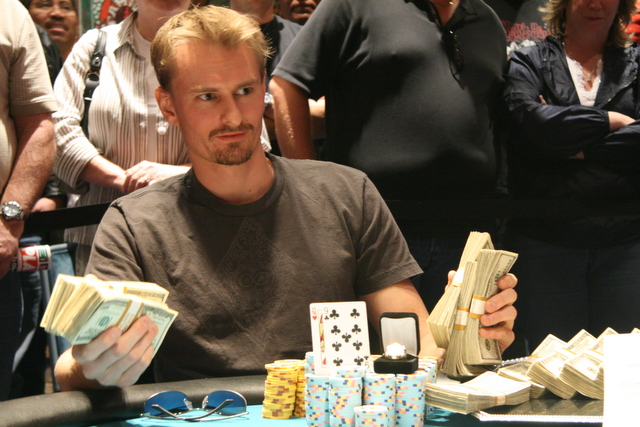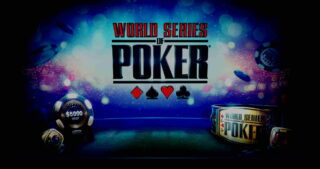To make money at poker you have to play the odds correctly.
To play the odds correctly, you have to understand your outs and anti-outs and be able to evaluate them quickly.
In deep-stacked cash games these are the most important concepts to understand and calculate correctly at the tables. Naturally, that means they're also the most difficult.
Before you can begin using anti-outs and money cards to your advantage, you must have an in-depth understanding of odds and outs and know how the statistics work - how they affect you and your opponent.
You need to know what is a profitable move, basically.
Even if you're a "feel" player, meaning you don't know the exact numbers or how to figure them, all good feel players inherently understand these concepts, and use them often just as correctly as a "math" player. The odds are the same whether you understand them or not.
The only way to be a strong feel player is to have a vast amount of experience. You have to know by look and feel what is +EV and what is -EV. If you're able to, learning the math in the first place will save you time and money.
What is an Anti-Out?
Before we go any further, let's define "anti-out" and "money card." Once you know exactly what they are, we can go on to examples and explanations.
Anti-Out: An anti-out is not exactly the opposite of an out; it's the opposite's evil brother. An anti-out is an out that does improve your hand, but by doing so, gives your opponent a stronger hand.
If you're counting your anti-outs as true outs, they can cost you a lot of money when they show up.
What is a Money Card?
Money Card: Most often, a money card is a reverse anti-out. Any card which is an anti-out to you is a money card to your opponent, and vice versa.
Sometimes a money card is simply an out that makes you a hidden winning hand. If your opponent doesn't see that they're beat, they'll be sure to pay you very well.Get $88 FREE Right Now!
What are Anti-Outs to a Flush Draw?
Here's an example of an obvious possible anti-out: You're last to act playing a pot heads-up against the pre-flop raiser. He open-bets pot on the flop; you call. He bets the pot again on the turn; action on you:
The board:
Your hand:
Your opponent in the hand is very tight, and has not once shown anything other than the nuts. He's only raised pre-flop with top 5 hands, and is playing very TAG (tight-aggressive) poker. You now have top pair, top kicker, and the nut-flush draw.
Many beginner players would think that there is a good chance they're ahead now after hitting the turn, and even if they're not, they have a nut draw to the hearts - a good place to reraise or push.
Unfortunately, your opponent's actions don't support this thought pattern. The only reasonable hand you can put your opponent on at this point is a set.
If he had an overpair on the flop, he would likely have checked, or bet less on the turn: he's too tight a player to bet into an ace when an ace is a scare card. The only reasonable hand you can put him on is a set.
To win this hand you have to make a flush. There are nine outs to a flush, but if your opponent does have a set, one of those outs are now anti-outs.
If you pair the board when you hit your flush, you're losing to a full house. You're playing an eight-outer, with an unlikely chance at making much money if you hit one of them. This is a poor place to be, and you should probably fold.
A Money Card Example
You're a LAG (loose-aggressive) player up against a relatively tight, very aggressive player. He raises pre-flop from middle position, and you make the call with
The Flop:
This is a very good flop for you. You have the flush draw, and a gutshot straight draw; and the king on board almost ensures you will get action, as there is a very good chance one or both of the other players has a king or better.
In this hand, you have 12 outs (nine for the flush, four for the gutshot, with one out being counted twice). Aside from the original raiser, the other two players are regular players, both tight and given to superstition.
In this scenario your nine outs to hit the flush are probably live, but when you hit the flush you're not going to get paid.
Good players shut down when three to a flush comes on board, and superstitious players are even more likely to shut down, as they seem to believe that "every time they have a good hand, someone has a flush to beat them." They will assume you have the flush if it comes.
The only way you're going to get paid is if you hit an eight for your gutshot. Hitting this will get you paid - the other players will know you're on a flush draw, and won't even see the straight when the eight comes.
As long as the bets are reasonable, you have the pot odds to play the hand to the river, with implied odds on the gutshot.
This means you want to play the hand as if you have the flush draw, by calling, not raising. You want to keep the pot small, and you want the other players to feel as if you're drawing.
Take the pot odds on your flush draw, and bask in your implied odds on the gutshot.
An Anti-Out Example
Here's a somewhat silly example to solidify the idea of anti-outs for you. If there's a raise pre-flop, you reraise with
The Flop:
Although it looks so very awesome to hit a set, this is a horrible flop for you. Many beginner players will donk off their entire stack on this flop, knowing that they flopped a set, and a set is typically a very strong hand.
In reality, you have a very poor hand. The range of hands against you include AA, KK, QQ, and A-K.
You're ahead of AA and KK; well behind QQ and A-K. This puts you into a very difficult spot, as you have no way of knowing what outs you truly have and which are actually anti-outs for you.
If your opponent has A-K, you need to pair the board.
If your opponent has QQ, you can only catch the case jack, or a running straight for a chopped pot.
If your opponent has AA or KK, you have to only dodge your opponent's outs.
The problem here is you have no way of knowing where you stand. The vast majority of opponents will play A-K and QQ exactly the same here, and many of them will play AA and KK as if they're the nuts as well.
If your opponent has one of these hands, they will, more often than not, be willing to put their whole stack in the middle.
These are the situations you have to avoid playing online poker No-Limit game. Setup hands are where the most money gets won and lost on a table.
Keep an eye out for your outs, anti-outs and money cards and play accordingly. On top of that, be aware of what cards could possibly be money cards for your opponents.
A player playing on the assumption of their money card giving them implied odds will be making mathematically incorrect plays if you view their assumed money card as a threat.
If you always fold when their money card hits, you'll be extracting large value out of their miscalculations of their total odds.









about the last example, doesn’t hurt to add in the fact there are a lot more possible combos to make ak then aa or kk
@ Chillnlean: How would a Q give Hero a strait? The only Broadway cards on the board and in Hero’s hand are A, K and J and even if a Q fell on the river (remember, there’s only one card to come in the example) that’s still only four cards to a strait. Don’t count.
Nice tips and all, but in the first example you gave there are a bunch of errors. If you are putting your opponent on a set, then won’t a straight win the pot? So you have to add all the queens to your outs. So this is really an 11 outer.
Love this article. I’m still not at the level of thinking through all the possibilities while actually playing and in a hand, but I am also creating mock hands and situations at home with a deck of cards as practice in identifying money cards and anti-outs.
I recently stumbled across this site and have been reading the articles from the bottom to the top. Great stuff here. Wish I had gotten to this article before the weekend…
I got involved with a similar hand and threw a stack away. Basically I had K-K in position. My opponent raised 4x preflop and I 3 bet him. He flat called. I figured him for AK, AQ, QQ. I thought he would re-raise with AA. The flop came A-K-4 rainbow. Opp checked. I bet ~70% of the pot. He flat called again. Turn came Q. Opp checked. I again bet ~70% of the pot. Opp went all in. At this point I figured he hit his set of queens or made 2 pair with AQ. I quickly called only to have him turn over J-10 offsuit. Demoralized.
What about the ladies?
Thanks for spotting the outs error, you’re absolutely correct, it’s an eight outer. I’m not typically one for excuses, but I was horrifically sick when I wrote this article.
As for the call vs fold, I agree, you don’t have the outs. A typical player often uses the mindset of “I’m ahead of anything but a set, and even if he has a set I have a draw to the nuts”. They’ll make this call because they A) want to win the pot, and B) can’t 100% put someone on a hand as big as a set.
Realistically only a set makes sense here, which means you don’t have the odds to call. I was never trying to insinuate that you would have the odds if you had the full 9 outs, even if that’s how it reads… again, sick.
Thanks Vince
I learned something from this article (as I do from all of your articles), but if I may quibble for a moment. In your first example, “Anti-Outs to a Flush Draw” you claim that two outs are anti-outs, but isn’t the Jack of Hearts the only anti-out? Unless I’m missing something, there’s no other card that will both make a flush and give your opponent either a boat or quads. So really, you’re down to 8 outs, not 7. Also, if you believe your opponent is holding a set (a good assumption here), you don’t have odds to call a pot-sized bet on a flush draw for 7, 8, or 9 outs anyway, right? Even 9 outs are 4-to-1, with pot odds of 2-to-1 to call. So the point about anti-outs is pretty much moot in this example.
Anyway, I get the main point, and appreciate the time you take to write these–you’ve helped my game tremendously.